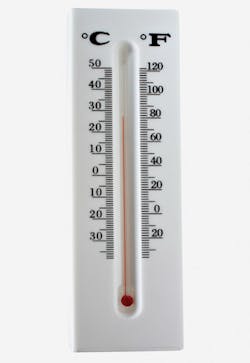INFRASTRUCTURE: Safety and Diagnostics Emerge as Temperature Sensor Issues
Two important emerging issues he sees are safety and diagnostics. “As process manufacturers become increasingly safety- and best-practice conscious, they are requiring certification for transmitters connected to their Safety Instrumented Systems.” This trend is catching on across all of the hydrocarbon industries to drive risk reduction, improve error detection and improve plant safety, adds Karthikeyan Seetharaman, global product marketing manager for temperature field solutions, Honeywell Process Solutions (http://hpsweb.honeywell.com), a Phoenix-based supplier.
While third-party certified pressure transmitters are now entering the market, most, if not all temperature transmitters are proven-in-use rather than certified, Cupo explains. But end-users increasingly want Certified Safety Temperature transmitters, he observes. That implies extensive firmware testing and failure analysis conducted by a competent and independent third party, such as Cologne, Germany-headquartered TUV Rheinland (www.tuv.com), he adds.
End-users also expect temperature transmitters to possess more meaningful and relevant diagnostics. The most beneficial alert end-users to a potential failure, Cupo says. “The earlier the diagnostic is able to trigger prior to catastrophic failure, the more valuable it becomes.” For example, a temperature transmitter with a “robust” predictive diagnostic suite can have implications with respect to extending plant up-time and redundancy requirements, he suggests.
Another trend in temperature measurement for process-manufacturing monitoring applications involves wireless technology, Seetharaman observes. The biggest drivers of this “clear emerging choice” are ease of installation, need for improved safety and elimination of wiring, he says. Wireless avoids previous limitations caused by wires, enabling end-users “to select the temperature measurement location purely based on process requirements,” he observes.
Noting that thermocouples are “a preferred temperature sensor” for most industrial process manufacturers, Seetharaman says that those sensors “traditionally service a wide range of temperature applications, from low to extremely high temperatures, depending upon the range selected. They are well suited for and are typically the first choice for higher temperature applications.”
To substantially extend the life of thermocouples in ultra-harsh applications, such as coal gasifiers, the Rosemount Division of Emerson Process Management (www.emersonprocess.com/Rosemount) developed a high-temperature thermocouple enclosed by a gas-tight sapphire protection tube. This exotic-sounding technology is a “game changer,” because of its five-fold increase in the sensor’s life, declares Tom Wallace, global marketing manager for Powers PlantWeb, with Emerson, in Chanhassen, Minn.
In high-temperature, high-pressure applications such as gasification, pressures may exceed 65 bar, or 65 times atmospheric pressure; and temperature may exceed 1,800 degrees Celsius. In those applications, which contain hydrogen, soot and trace metals, as these materials diffuse through a standard thermocouple’s protection tube, “they can poison the probe and can actually lower the melting point of the probe by several hundred degrees, obviously causing failure,” Wallace explains.
Running blind
Another equally serious problem is that these materials erode the protection tube and sensor, and potentially, the seal that separates the sensor from the outside environment, Wallace states. When that happens, “you could get environmental releases of very hot, high-pressure contaminants” into the space that includes people and equipment. Even if that catastrophic event doesn’t occur, though, if the sensor fails, “you’re running the process blind,” Wallace observes.
While Emerson had a partial release of the sapphire sensor in early 2008, the company plans a global launch in mid-2009. “It has been used in plants all over the world. We do know how it works and how it acts,” Wallace asserts. He notes, though, that the sensor is expensive. “But it’s always pretty much going to be more economical to use the sapphire, because shutdown costs to replace ordinary sensors are very expensive.”
C. Kenna Amos, [email protected], is an Automation World Contributing Editor.
Invensys Process Systems
www.ips.invensys.com
Honeywell Process Solutions
http://hpsweb.honeywell.com
TUV Rheinland
www.tuv.com
Emerson Process Management
www.emersonprocess.com/Rosemount
About the Author
C. Kenna Amos
Contributing Editor

Leaders relevant to this article:
